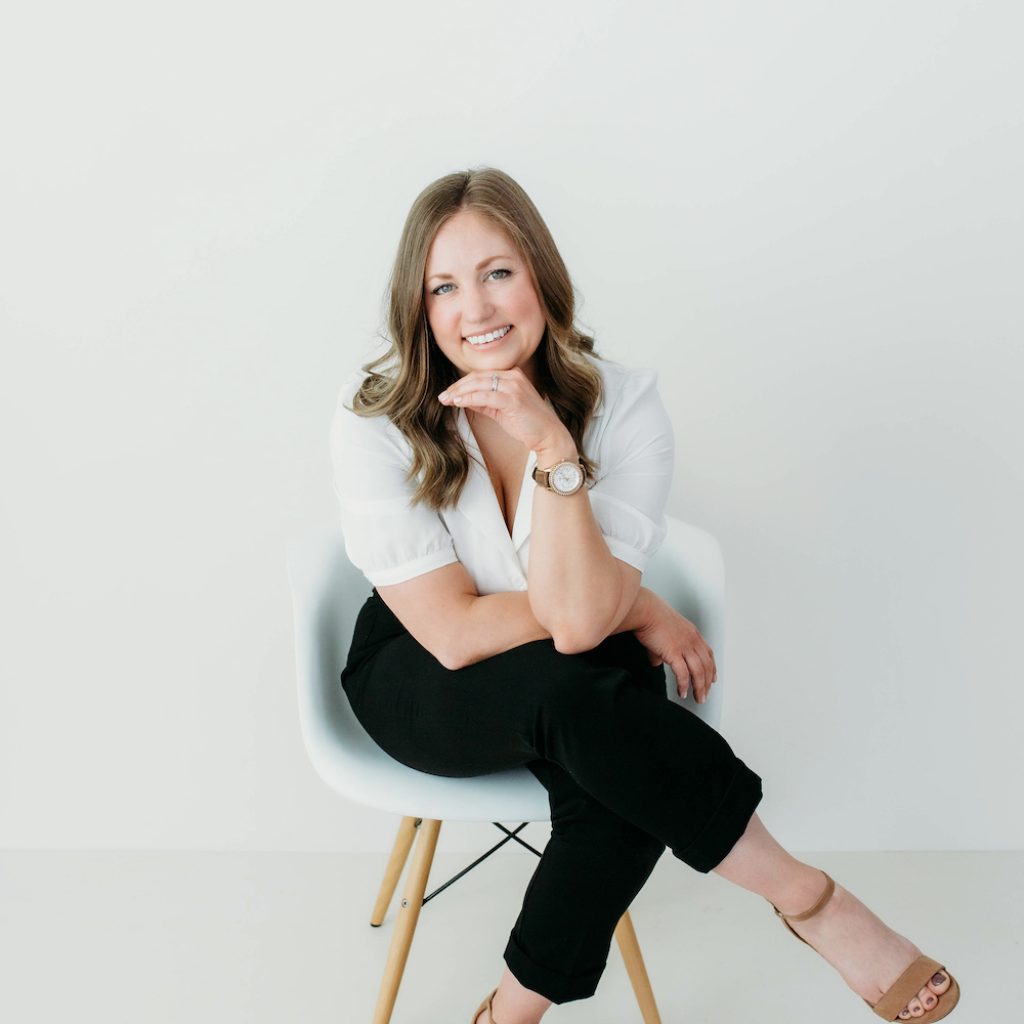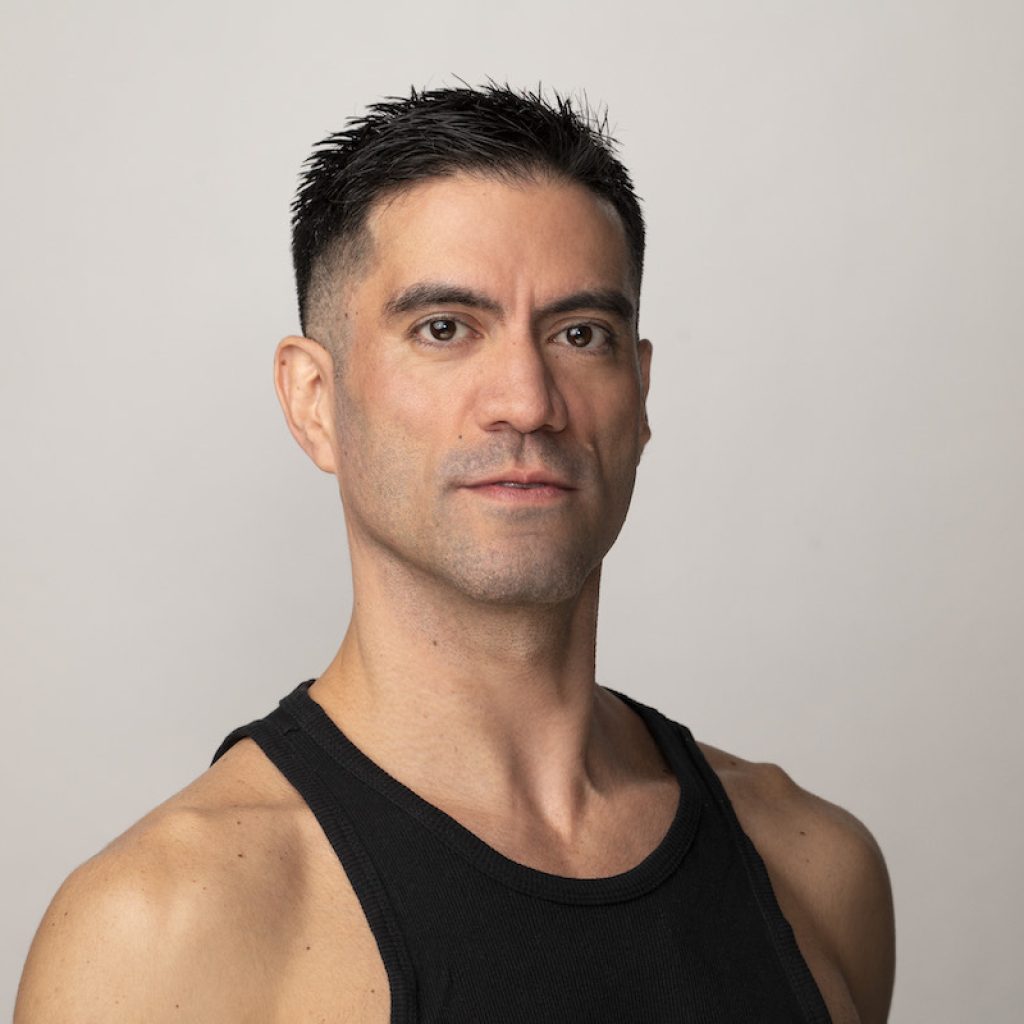Share

Tweet
Share
Share
Ever taken a class and – while struggling to pick up choreography and accomplish the athleticism at hand – felt like you should have “level-ed down”? Ever had a first day with a new project and doubted that it was a good idea for them to hire you, like you’re just not up to the work? Ever auditioned and felt like everyone was nailing it – except for you?
Dear reader, you are in no way alone. Having those types of experiences are arguably just part of being a dancer. It may be even more common in today’s dance sector, “with so many classes and styles to explore,” says NYC-based professional dancer and educator Valerie Kosnevich.
Caitlin Sloan. Photo by Nicole Manner.
We certainly won’t move forward in our craft or career if we always throw in the towel when we face these situations. So how do we persist through them and make the best of it? To look into those questions, we’ll hear from Kosnevich; as well as Caitlin Sloan, former professional dancer and dance career mentor; and another NYC-based professional dancer and educator, Oscar Antonio Rodriguez.
Before we dive in there, an important first thing to note is feeling overwhelmed and frustrated is completely valid and understandable. Kosnevich again, with some words to demonstrate that:
“I’ve had moments where I wanted to walk out of class, take a deep breath and just reset. How do you keep going when you’re overwhelmed with the choreography, when you just can’t get a particular step, or when you find yourself half a beat off from the group — stuck because your brain and body simply can’t keep up with the pace? It’s one thing if dance is an after-office hobby; even then, there can be moments of real frustration. But when you’re pursuing dance as a professional career, the stakes are so much higher. There is no room for mistakes.”
Emotions are just something to move through (doing that being a practice in and of itself). After that, we can focus on solutions. So, let’s now turn there.
Mindset matters.
“In order to get better at something you have to be willing to be bad at it first. As dancers, we always feel like we need to prove ourselves. Instead, try to shift that to a mindset of being a learner,” advises Sloan. She reminds us of the first time we did something as fundamental and ingrained as a plié; we got to such a point of comfort because, over time, we kept doing them.
Sloan is discussing growth mindset — where we focus on progress, step by step, rather than on what doesn’t feel possible right now. She says that if we view each challenge as an opportunity for growth, it can fully shift how we approach our work. “You’ll realize that you are constantly a work in progress, and this is yet another stepping stone on your path.”
She gives an example from her professional dance career: when she found a company where she “thrived”, even though things could feel hard and uncomfortable. “I worked with many choreographers that pushed me to explore movement styles that were very much outside of my comfort zone. The best thing you can do in those situations is keep an open mind.”
You can then be ready to learn and improve – just like a starry-eyed beginner. Kosnevich also encourages this outlook; when she feels like she’s struggling, such as in those instances when she needs to take a step out of class for a breather, she reminds herself that “it’s just the beginning.”
It can take months to get past that beginning, “before something finally clicks…and that’s okay, that’s part of the journey,” Kosnevich believes. She encourages us to see the wonder at that beginning place – where we’re “learning, growing and stepping into the unknown. If you can approach new experiences with curiosity and an open mind, you’re already on the right path.”
Embodiment, curiosity and more: More approaches for facing challenge
Speaking of curiosity, Sloan advises us to be curious about what our body is telling us when we feel like we’re in over our head. “For people who spend our lives in the pursuit of physical excellence, dancers tend to be disembodied,” she notes. Yes, there are times when we need to push through physical discomfort – but taken to a certain degree, as unfortunately happens with many dancers, we “start to ignore signs from (the) body.”
It can help to learn the nuances of those physiological messages — for example, the difference between a bit of necessary physical discomfort and physical pain, as well as recognizing a bad gut feeling. Such understanding can help us to know if it’s best to stay with the challenge, “if this is a situation you can grow from, or if you would be better off stepping away,” says Sloan.
Curiosity, more generally, can help us ask questions that further guide how we act when we’re faced with significant challenge. For example, “’What’s one small thing I can improve on today?’ or ‘What excites me about this challenge?’” Sloan offers. “Taking a pause and approaching the situation again from a different lens can make all the difference.”
Curiosity can also help keep us from shutting down. “It’s difficult to feel vulnerable and exposed. While closing ourselves off can provide temporary relief, it also limits our growth as a dancer,” Sloan adds. Rodriguez also encourages curiosity. In challenging situations, where you might feel uncomfortable, ask yourself why you’re feeling that way. “How can you make the movement work for you without losing its original essence?” he offers.
As another way to avoid closing ourselves off, Kosnevich encourages us to – if possible, and after doing our best to come to the necessary answer ourselves – ask for help, from friends, teachers, mentors, whoever might be able to offer guidance. She also advises making the best use of any feedback we may receive – to better understand “the essence of the movement, those small details that make a style unique.”
To get closer to mastery of those details, repeat, repeat, repeat…in a smart way, Kosnevich also suggests. “Instead of just mimicking what I see, I try to be fully aware of what I’m doing, how it feels in my body and how I can improve. Over time, that awareness turns into muscle memory, and what once felt impossible becomes effortless.”
That does take time, but allow yourself that, she recommends. “Allow yourself to experiment and explore. Growth often happens in the small, in-between moments.” Rodriguez also recommends slowing down. “Even when the process goes by faster than what you expect, we have to give ourselves the space we need,” he remarks.
Finding your own way to connect with the movement – whether that be “through musicality, visualization, storytelling, or even giving it a word or a feeling, whatever makes it resonate for you” – can guide this process, Kosnevich believes. Focus on that process to help you stay in the present moment, Kosnevich encourages. Trust in your own skill sets to guide you through that present, Rodriguez says.
Setting yourself up for success: Shaping your own journey
Within one class, under contract with a company or the like, you may have limited options (with none of them being downside-free). Yet, can you perhaps learn from the experience, to navigate such a situation better next time? Sloan recommends slowly building up challenge – rather than, say, going from a beginner class right into advanced/pro-level.
 Caitlin Sloan. Photo by Krista Brinkmeier.
Caitlin Sloan. Photo by Krista Brinkmeier.
She describes it best: “Think of the brain as a muscle. If you want to keep building muscle in your body, you gradually increase the intensity of your training using progressive overload. In order to get mentally stronger when it comes to dealing with challenges, we can use the same strategy. If you go too hard too fast, you’ll likely get overwhelmed and want to give up. But if you can slowly put yourself in progressively challenging situations and prove to your brain that you can do hard things, you’ll build that muscle and be better able to cope.”
Sloan also highlights the importance of the environment you’re in – which, over time, is something that we can choose to shape. “Sometimes, you need a different environment to realize your full potential. But I truly believe that you’ll flourish given the right environment. If you don’t feel you have found that place, keep searching.”
Another aspect to consider here is how much you stay consistent with training, such as with taking the same or similar classes, versus mixing things up. Kosnevich advocates the former. “Sticking with the same teacher or choreographer has allowed me to improve so much faster than bouncing between different styles and instructors,” Kosnevich shares. “It’s tempting to want to take everything — to explore every style, every opportunity — but I’ve found that deep growth happens when you commit to one thing and give it your full energy and attention.”
At the same time, she notes how every dancer is different and some may “thrive on variety.” Indeed, Rodriguez believes that’s “where the growth happens more.” Even with discomfort – overthinking and dancing inefficiently, for example – trying out new styles and classes is where one can enhance their skills and versatility, he says. He therefore encourages stepping outside of one’s comfort zone, where and when possible. Sloan agrees. “If you want to continue advancing, you have to keep trying new things,” she says.
Whatever may be happening, always be kind and respectful, Rodriguez notes. “Life takes many turns,” and you never know if you’ll work with the same person again in the future, he says. Kindness also involves kindness to ourselves, he adds.
Moving forward with joy and love for it
Kosnevich reminds us to also just “breathe, enjoy the process, and have fun.” That’ll help facilitate your learning, she says. It can also help to return to your “why”, what brings you to dance and what is truly best for you on your path. “You chose to be here for a reason. Something inspired you from the very beginning, so hold on to that feeling and let it guide you.”
 Oscar Antonio Rodriguez. Photo by Nir Arieli.
Oscar Antonio Rodriguez. Photo by Nir Arieli.
Additionally, what is best for your journey, and what can you uniquely contribute? “One of the most beautiful things about dance is that it’s an art form, which means there are no real mistakes. It’s your way of expressing…yourself. Do your best version of what’s being asked. It doesn’t have to be perfect — just intentional,” Kosnevich says.
Rodriguez recommends taking things one step at a time, literally and figuratively – to shift perspective from thoughts like “I’ll never pick this all up, I’m not ready,” to “Okay, what’s that count, and then what’s next…” We can build our learning and capability from there, without getting so overwhelmed that we freeze. Fear can block creativity. Small bits of accomplishment can lead to more accomplishment.
We’ll pass the microphone back to Kosnevich to close us out, with some wise and poetic words. “Growth isn’t always easy. Some days, it feels like you’re moving backward instead of forward. But that’s part of the journey. Trust it. Over time, things will fall into place, and you’ll look back realizing just how much progress you’ve made.”
Keep going. Step by step, you climb the mountain, and when you finally reach the top, there’s this incredible sense of relief and accomplishment. It’s a unique process for everyone, and that’s what makes it so special.
By Kathryn Boland of Dance Informa.






GIPHY App Key not set. Please check settings